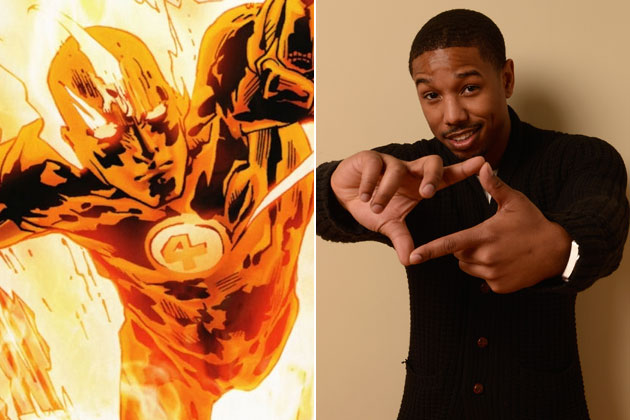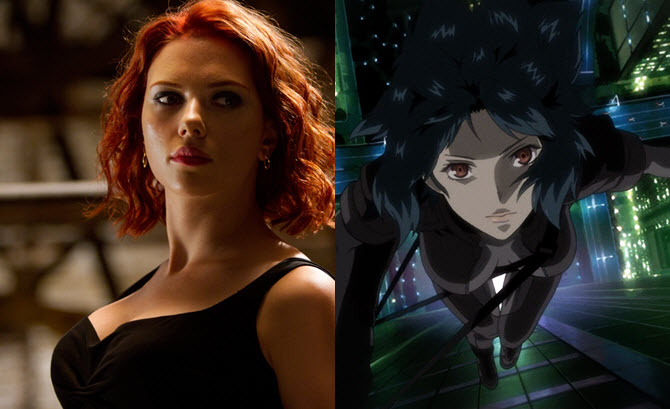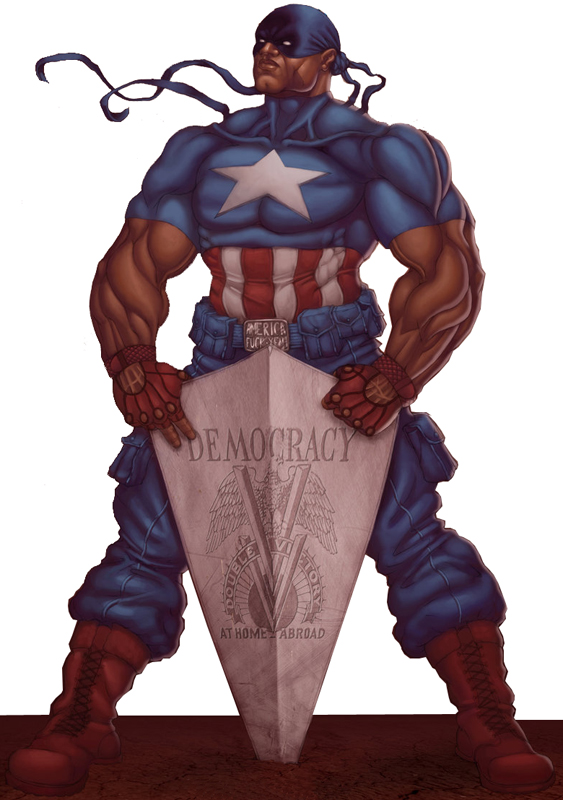PSA: Whitewashing A Character Is Different From Michael B. Jordan Being Cast As Johnny Storm
The difference between racebending and whitewashing.


When it was announced about a year ago that Michael B. Jordan would be taking on the role of Johnny Storm in the Fantastic Four reboot, there was a considerable amount of backlash against the decision to cast a black actor in the role of a character who has always been portrayed as a white man. Despite Jordan taking the comments in stride (“It was expected . . . You can’t make everybody happy” he said), this is response is indicative of our culture’s exclusion of people of color in mainstream media, and it’s hardly an isolated incident.
Hollywood is overwhelmingly white, and even if non-white folk are able to make their way in, they are hardly ever recognized for it (Selma’s snub at the Oscars, anyone?). This noticeable lack of people of color is even more prominent when the nerdy stories we love become mainstream. You can counter with rapid-fire facts and statistics about representation to your heart’s content, but you’ll inevitably be met with with something along the lines of: “Well then, if people of color can take white roles, why can’t white people play the roles of people of color? It should go both ways.”
Sigh. The side effects of color-blind mentality.
There is a stark difference between racebending and whitewashing. When white actors and actresses take the few roles that are originally designed for people of color, they Columbus an entire franchise. It’s what happens when Jennifer Lawrence portrays a girl described as “olive skin” in The Hunger Game series; it’s what happens when M. Night Shyamalan casts white actors as protagonists of color in The Last Airbender; and it’s what happens when Dreamworks casts Scarlett Johansson as Motoko Kusanagi in Ghost in the Shell. Whitewashing takes over the limited space people of color have to exist in the entertainment industry as complex, multifaceted individuals, and then shuts them out completely.

This of course begs the important question, why are characters ever whitewashed? Was Scarlett Johansson cast as Motoko as opposed to, say, Rinko Kikuchi because she is more profitable? Because Dreamworks thought she would be easier to relate to, that a white woman playing a role as opposed to an asian woman is more palatable? Who knows what was going through the creators’ heads when they decide to paint a prominently Asian series over with whiteness, but the questions it leads us to ask are indicative of issues deeply rooted in racial preferences and who the entertainment industry thinks we want to see on screen.
Racebending in the other direction — putting people of color in the roles of historically white characters — counters that, in a way. It demands a space for people of color to exist in franchises where they are severely underrepresented. Though the Fantastic Four reboot isn’t produced by Marvel Studios, like The Avengers, it is based on Marvel’s comics. Despite the comics offering a plethora of racial identities, however, racial diversity failed to make its way to the screen adaptations (are we just now getting a Black Panther movie?).
A character such as Captain American could have realistically been played by a black man (Isaiah Bradley, a black super soldier, has portrayed Captain America in the comics), but Marvel went with the safe and expected casting: a white man, who according to our screens represents America’s ideals by default — justice, honor and liberty. Anything that would shake our expectations and or welcome deviating identities into that noble representation would have been much too radical for the entertainment industry in 2015.

Seeing Marvel movies without having any familiarity of the Marvel Universe leaves people with a lily-white perception of the franchise, mirroring the whiteness that has permeated screen adaptations and reboots of books, comics, and existing films for the past decade. Maybe it’s out of pure selfishness, but I want to walk into a movie theater and see heroes that look like me on a regular basis. I don’t want to have to search IMDb’s website or wikipedia for non-white superhero movies, or find listicles that rattle of the “Top Ten Superheroes Portrayed By People Of Color.” I don’t want to have to rift through obscure old comics to see my face reflected back at me, I want to see it everywhere I look. No, that’s not selfish, it’s completely deserved. And that’s exactly why explaining the faults in whitewashing isn’t even a conversation worth entertaining.
If people of color were fairly represented in mainstream franchises — not just by the number of bodies, but by the complexity and relatability of their characters — then perhaps we could have a fair conversation about race bending in both directions. But until that representation is there and the history of erasure overcome, there’s no equating the elimination of spaces intended for non-white bodies with creating room for people of color to exist on screen.
Anjali Patel is a freelance writer and visual artist who enjoys indulging in everything nerdy. She likes to create content exploring the intersections of race, gender and geek culture. You can follow her day-to-day shenanigans on her Twitter @anjapatel, and read about things she likes on her blog: cliquetoreveal.wordpress.com.
—Please make note of The Mary Sue’s general comment policy.—
Do you follow The Mary Sue on Twitter, Facebook, Tumblr, Pinterest, & Google +?
Have a tip we should know? [email protected]